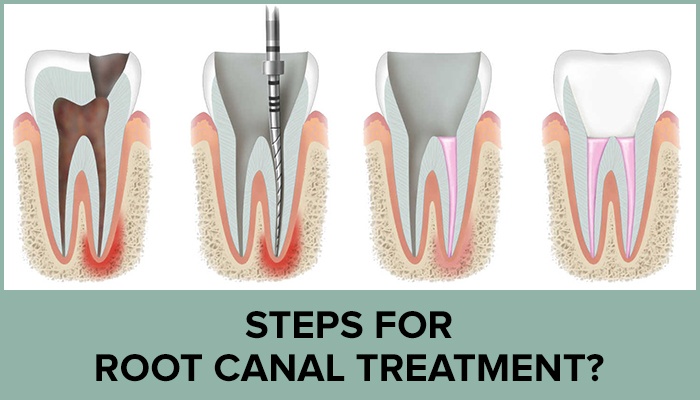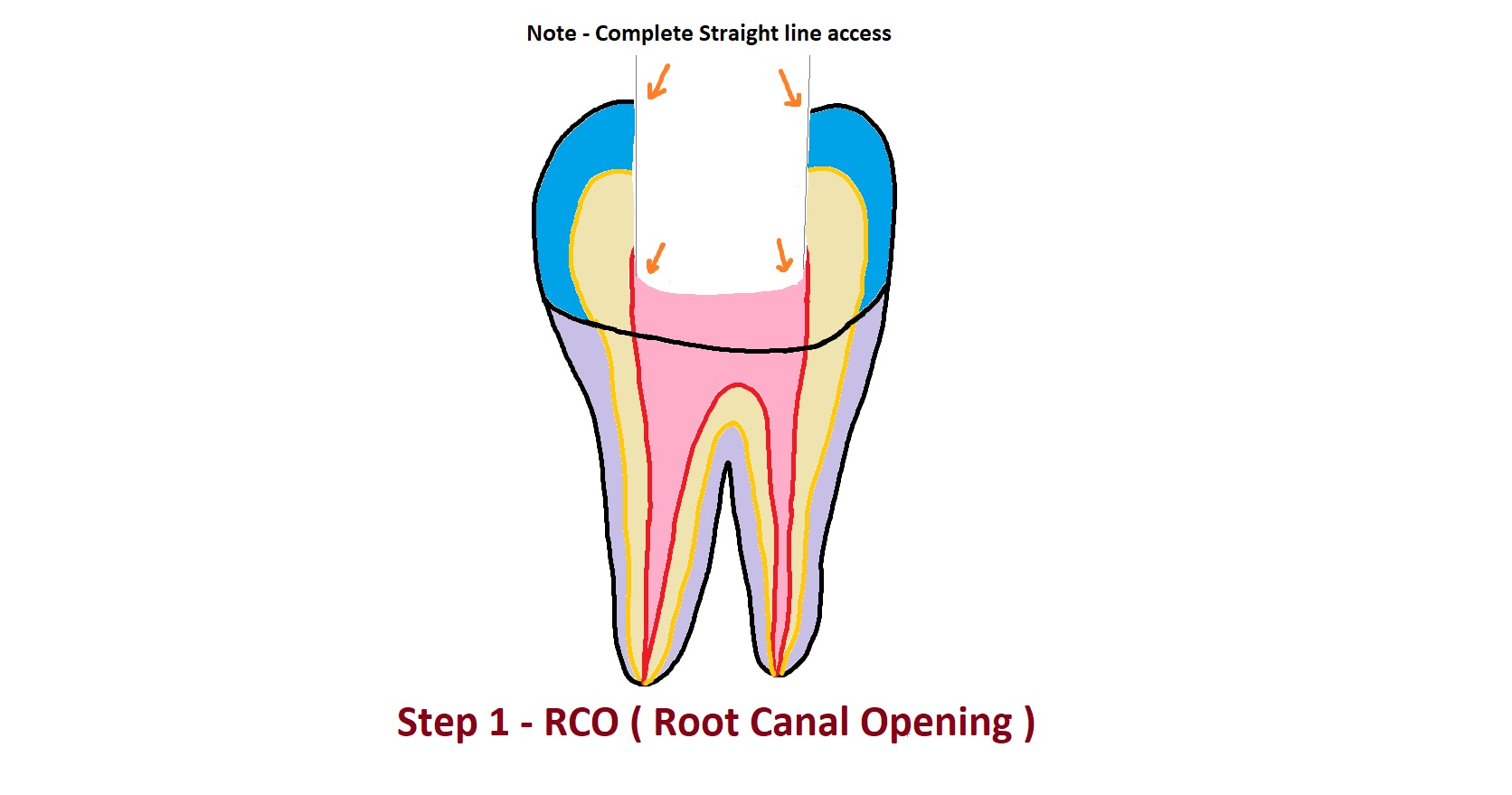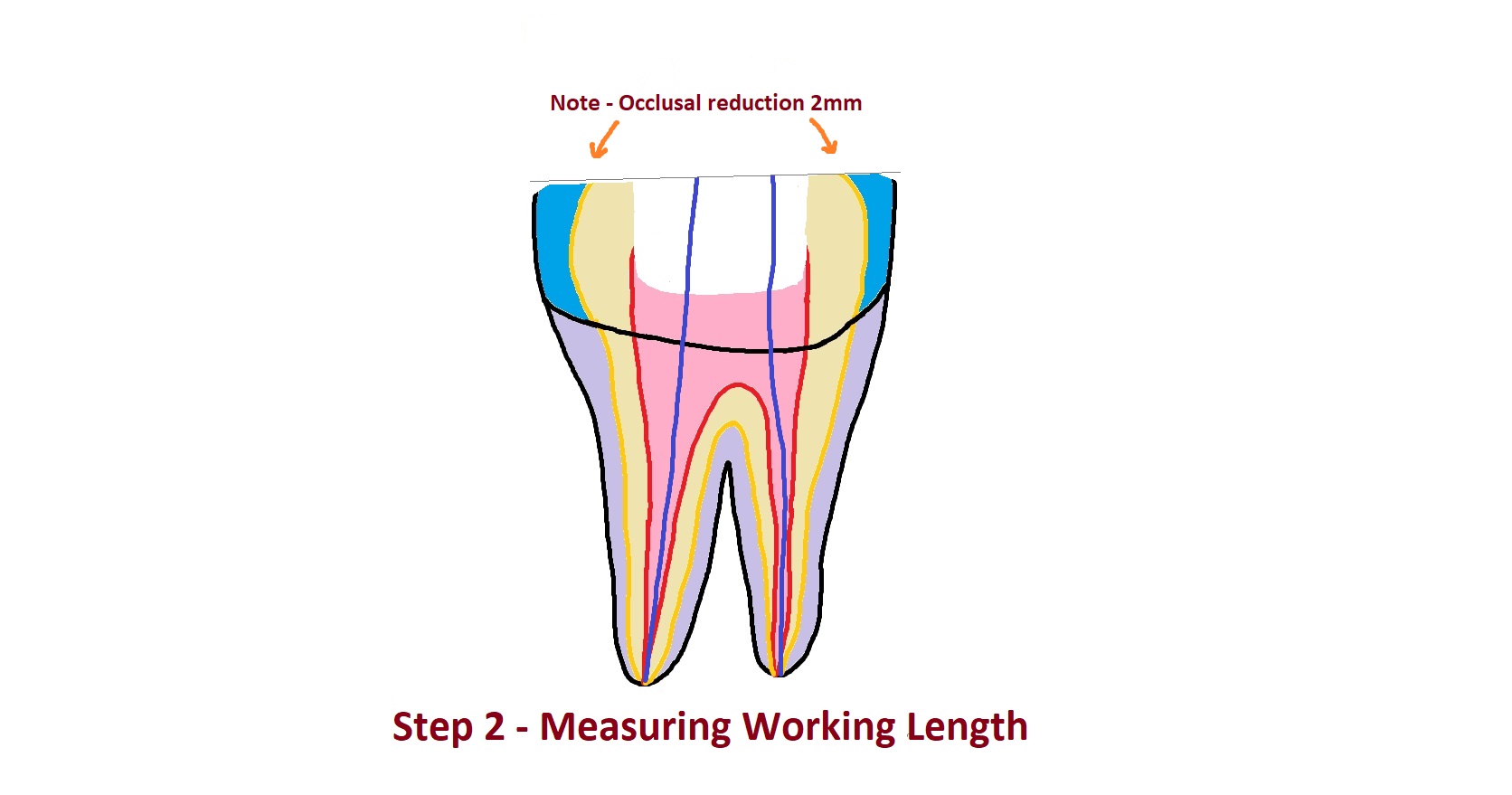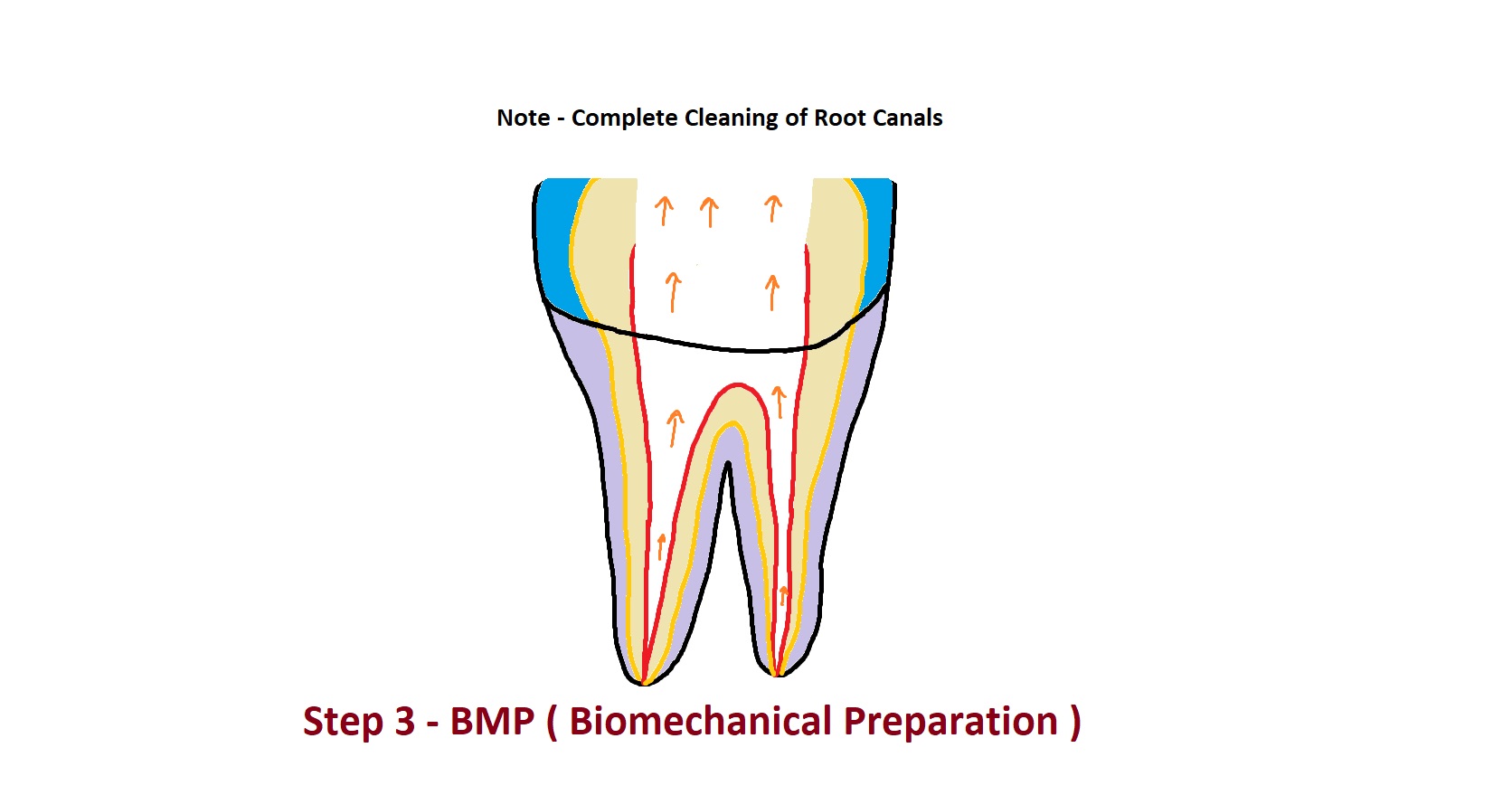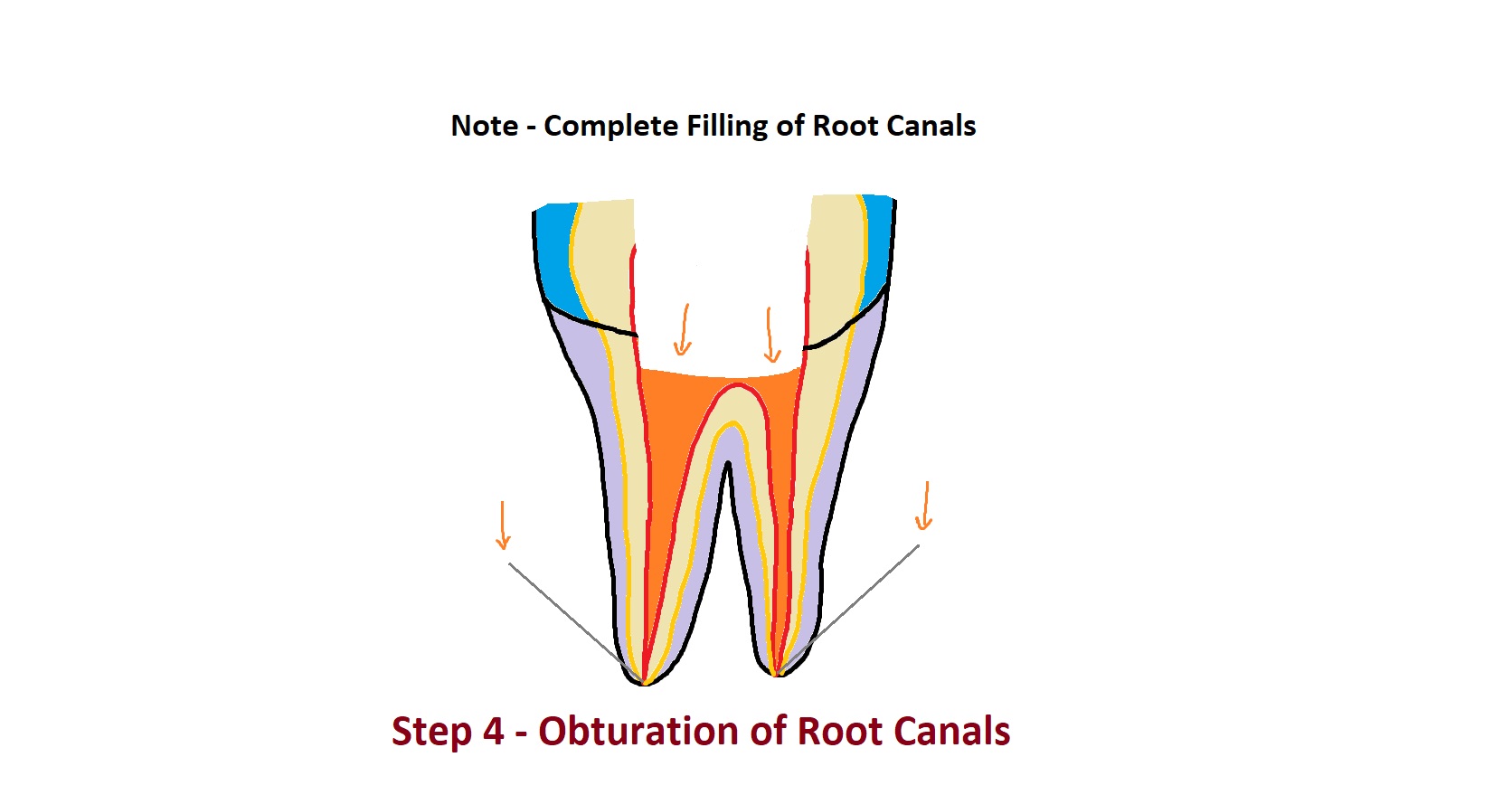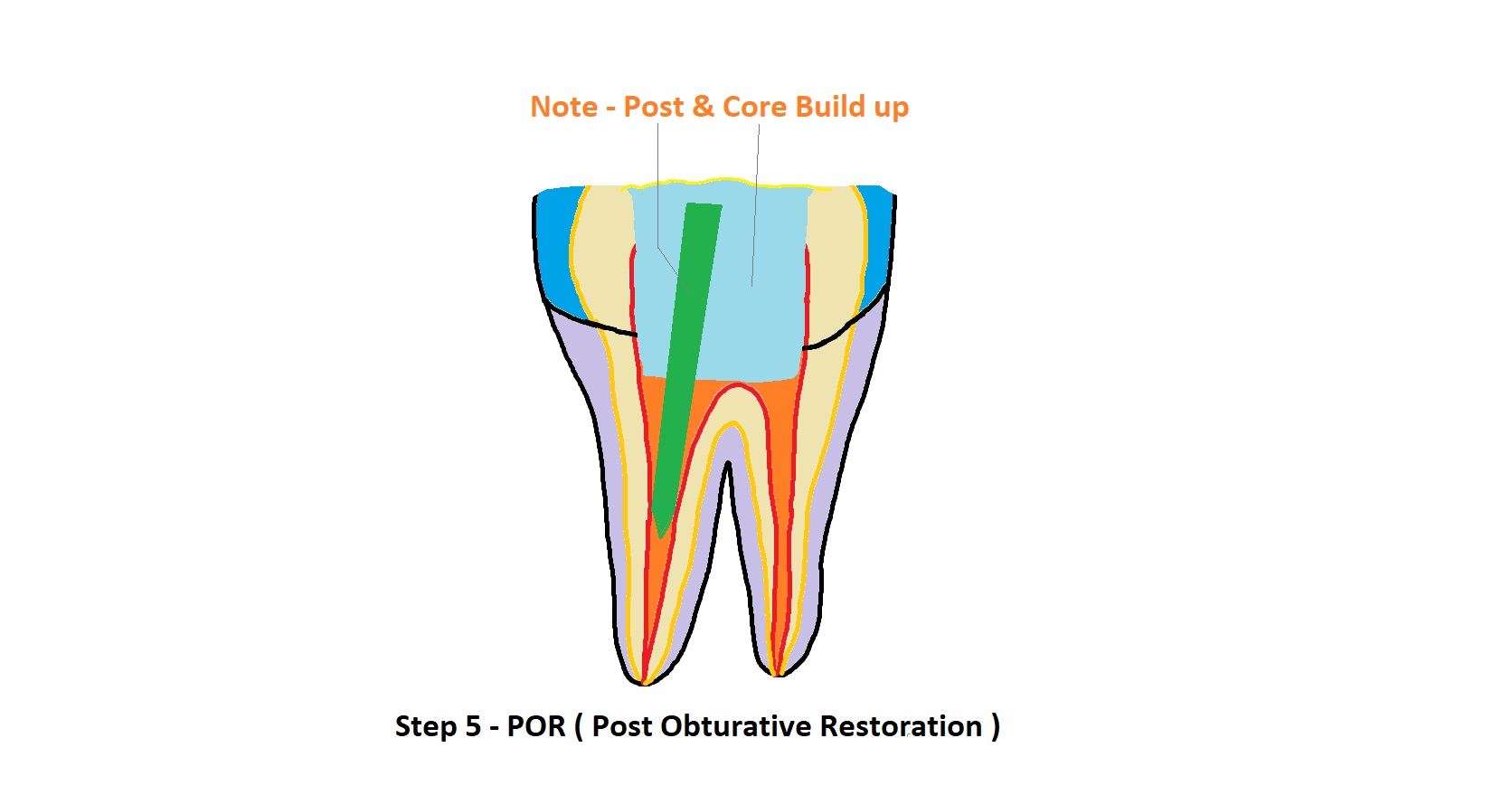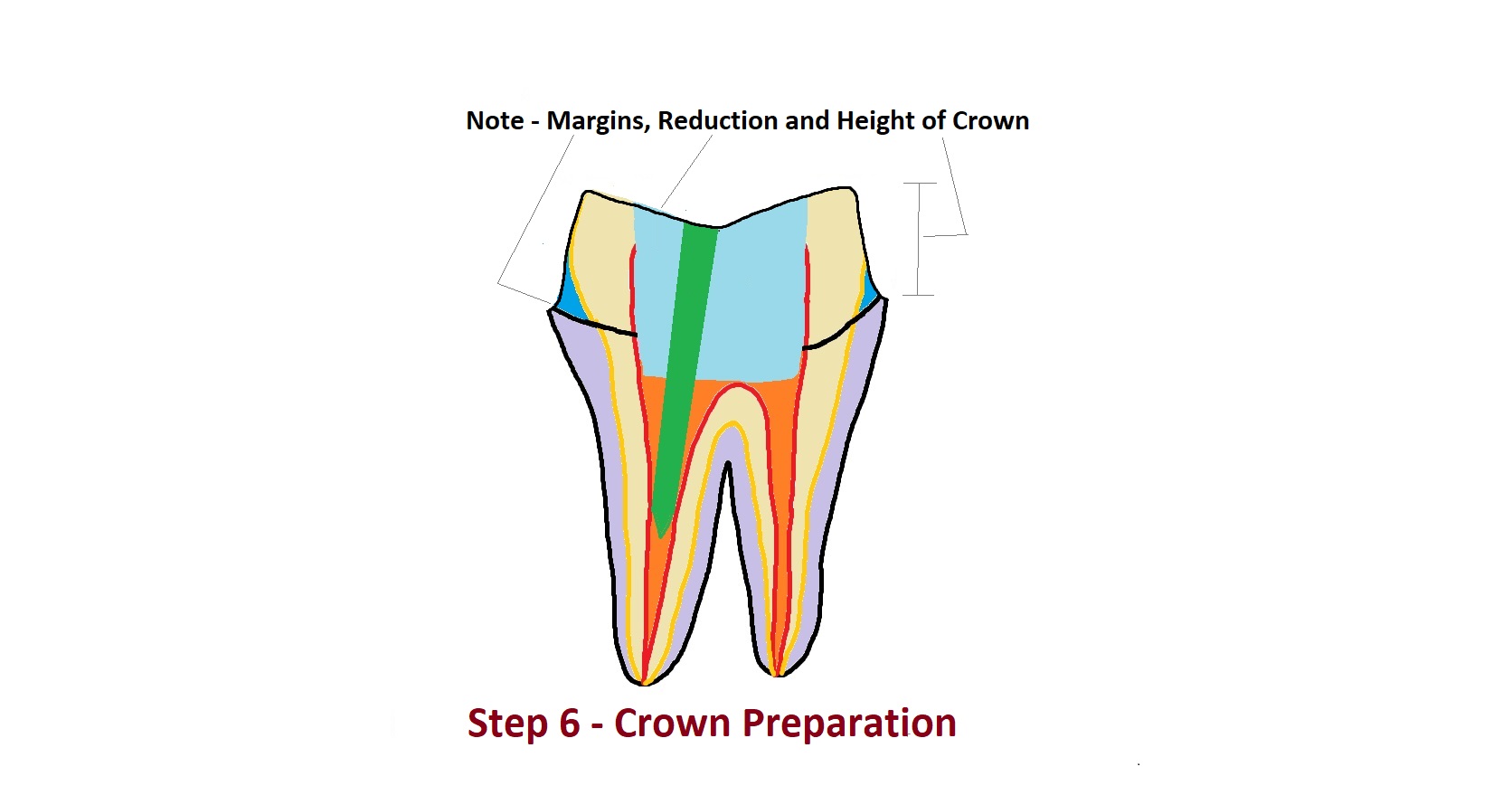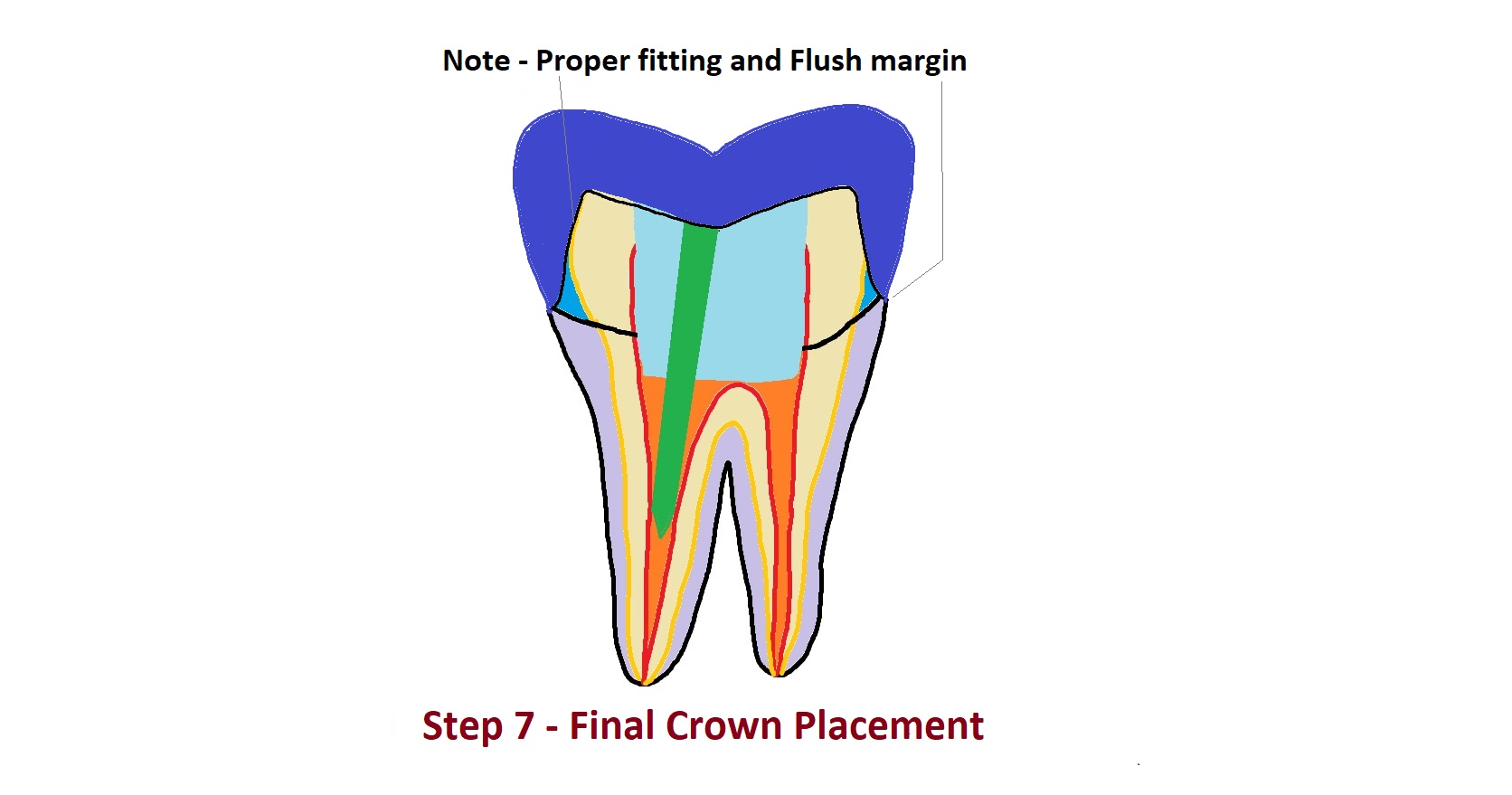1. Examination and Diagnosis :-
The dentist examines the affected tooth, reviews dental X-rays, and assesses the condition of the tooth and surrounding tissues.
They diagnose the need for root canal treatment based on symptoms such as severe toothache, sensitivity to hot and cold, swelling, or an abscess.
2. Anesthesia and Isolation :-
Local anesthesia is administered to numb the area around the affected tooth, ensuring a comfortable procedure. A dental dam, a thin rubber sheet, is placed over the tooth to isolate it and keep the area clean and free of saliva during the treatment.
3. Tooth Reduction :-
The dentist uses a dental handpiece (drill) to reshape the tooth. The amount of reduction depends on the specific case and the type of crown being used. The goal is to create adequate space for the crown while preserving as much healthy tooth structure as possible.
4. Access Opening :-
The dentist creates an access opening in the crown of the tooth using a dental drill, providing entry to the pulp chamber and root canal system.
5. Cleaning and Shaping :-
Specialized dental instruments, such as files and rotary instruments, are used to clean and shape the root canal system.
Infected or diseased pulp tissue, debris, and bacteria are carefully removed from the canals to eliminate infection and promote healing.
6. Irrigation and Disinfection :-
The root canal system is irrigated with antimicrobial solutions to thoroughly disinfect the canals and remove any remaining debris or bacteria.
7. Obturation (Filling) :-
The cleaned and shaped canals are filled with a biocompatible material, often gutta-percha, to seal the canals and prevent reinfection.
Dental cement or sealer is used along with the gutta-percha to create a tight seal.
8. Post Obturative Restoration :-
If necessary, a dental post may be placed in the root canal space to provide additional support for the final restoration.
A core build-up material is used to create a solid foundation for the crown restoration.
9. Crown Placement (Final Restoration) :-
A dental crown is fabricated based on impressions taken after root canal treatment.
The final crown is placed and secured onto the prepared tooth using dental cement or adhesive.
10. Follow-up and Aftercare :-
The patient may be prescribed pain medication or antibiotics, if necessary. Follow-up appointments are scheduled to monitor healing and ensure the success of the root canal treatment. Regular dental check-ups and good oral hygiene practices are recommended to maintain the health of the treated tooth.
